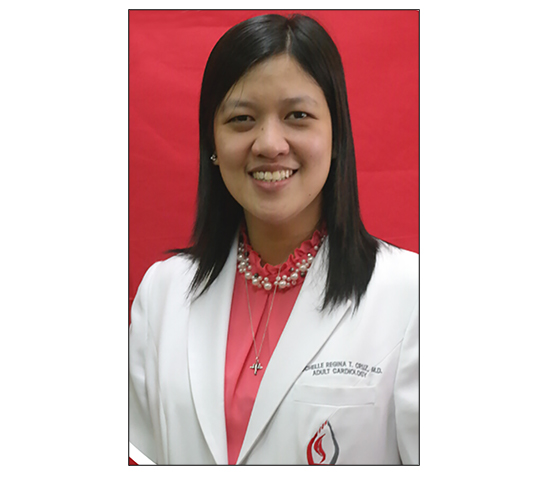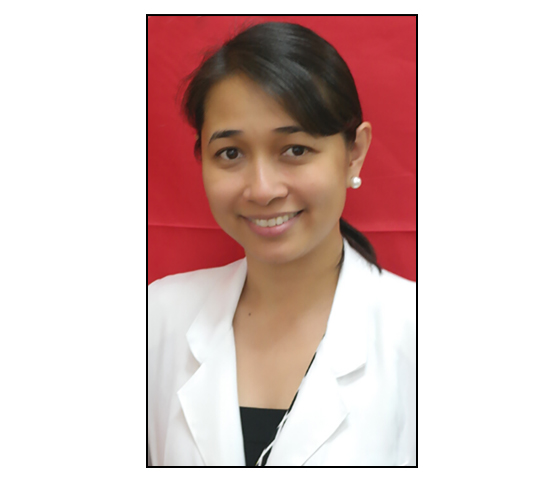Yes, you can die of a broken heart
Whether it’s a breakup, the death of a loved one or the passing of a beloved pet, these emotionally stressful events can tear our hearts apart.
Heartbreak can cause a large amount of stress, especially if the loss is a sudden one. This stress can affect how we feel emotionally and physically, and may take weeks, months or even years to recover from.
And so, the question remains: Can you really die of a broken heart?
“Yes, you may,” says Dr. Rochelle Regina T. Cruz, head of the Critical Care and Heart Failure Unit, Cardiovascular Institute of Cardinal Santos Medical Center. “But it’s extremely unlikely.”

This heart condition is called the broken heart syndrome, or stress-induced cardiomyopathy. It’s not a myth, folklore or plain and simple “hugot.”
“It really happens, and is more common in women,” notes Dr. Cruz. “This is caused by a person’s reaction to physically or emotionally stressful events like the COVID-19 pandemic. The body responds by releasing stress hormones that temporarily decrease the heart’s ability to pump blood.”
But, unlike a heart attack, there’s no evidence of blocked heart arteries.
“In broken heart syndrome, a part of your heart temporarily enlarges and doesn’t pump well, while the rest of your heart functions normally or with even more forceful contractions,” notes Dr. Cruz. “This can lead to severe, short-term muscle failure, which could weaken your heart over time.”
Most of the time, when the spasms relax and blood flow resumes, the heart failure will usually resolve. “If the heart failure doesn’t improve, it could cause death in extremely rare circumstances,” adds Dr. Cruz.
The good news is broken heart syndrome is “reversible and highly treatable.”
You are at risk of developing coronary heart disease if you’re over 45 and have two or more risk factors: family history of heart disease, hypertension, obesity, advanced age, excessive alcohol drinking, diabetes, sleep apnea, dyslipidemia (high cholesterol level) and severe stress.
“Most people who experience it make a full recovery within weeks,” adds the amiable lady doctor.
Be careful with your heart
Heart failure, or the inability of the heart to pump out oxygen-rich blood to supply all the organs in the body, can be scary.
“The most common cause of heart failure is not a failed relationship, but hypertension,” explains Dr. Cruz with a laugh. “It can develop in your 30s. There’s no sex predilection.”
Yes, suffering from heart failure can be scary, but it’s not a death sentence.
“With the advent of the new treatments, we can delay or entirely veer away from that dreadful path. Our priority is to decrease and eliminate symptoms and improve heart function the best we can,” enthuses Dr. Cruz.
In an effort to raise awareness about the different cardiovascular diseases that are becoming prevalent in the country, the Cardinal Santos Medical Center recently held “Where Do Broken Hearts Go,” a “webicon” on broken heart syndrome and other cardiovascular diseases you didn’t know you might have.
“Part of our advocacy is to make quality and innovative healthcare accessible to everyone and to educate the public about the life-saving services that are available to them,” explains Dr. Regidor R. Encabo, executive officer, Cardiovascular Institute, Cardinal Santos Medical Center.
Dr. Encabo is an interventional cardiologist. Interventional cardiology is a sub-specialty of cardiology.
“We are the last person a patient with cardiovascular disease would like to see,” says Dr. Encabo with an impish grin. “Because if they’re referred to us, that means their condition has worsened. Interventional cardiologists deal with procedures such as angiogram and angioplasty.”
Heart health matters
Ischemic heart disease or coronary heart disease (CHD) is the leading cause of mortality in the Philippines: 120 out of every 100,000 Filipinos died of coronary heart disease in 2019.
“Coronary heart disease happens when the veins in your blood vessels are blocked,” notes Dr. Louella Santos, head of the Preventive Cardiology Department.
There are several factors — non-modifiable and modifiable — that contribute to that.
Non-modifiable factors include age, gender and genetic disorders.

“We can’t fix that,” notes Dr. Santos.
The modifiable factors, on the other hand, contribute to the development of coronary heart disease. These include smoking, a sedentary lifestyle, unhealthy diet, dyslipidemia, hypertension, inflammation, diabetes and obesity.
“The role of the Preventive Cardiology Center is to put the spotlight on these risk factors to prevent the patient from having ischemic heart disease,” adds Dr. Santos.
If you go for a heart checkup, the first thing your cardiologist would recommend is to have your lipid profile taken.
“We want to know how bad your cholesterol level is and what causes your blood pressure to shoot up,” notes Dr. Santos. “It is also important to know where this bad cholesterol has accumulated. If it blocks the artery in the brain, it could cause a stroke. If it’s in the carotid artery or the neck, it could lead to carotid artery disease.”
At Cardinal Santos Medical Center’s Preventive Cardiology Center, the doctors can see right away where the blockage is through the Carotid Artery Duplex Scan, a treadmill exercise or even a nuclear thallium stress test.
“We need to have these tests done to be able to implement treatment,” explains Dr. Santos.
The problem with Filipino patients is that they will only consult a doctor when their health already deteriorates. By then, the prognosis is not good.
You are at risk of developing coronary heart disease if you’re over 45 years old with two or more risk factors: family history of heart disease, hypertension, obesity, advanced age, excessive alcohol drinking, diabetes, sleep apnea, dyslipidemia (high cholesterol level) and severe stress.
“Diet plays a major role. The number you should always watch out for is 140/90 (blood pressure),” advises Dr. Santos. “Let our goal be 120/80. Let’s make it a habit to check our blood pressure regularly.”
Cardinal Santos Medical Center, which is a preventive cardiology center, offers 24-hour ambulatory BP monitoring.
“We can monitor the patient’s BP for 24 hours. It can help us diagnose hypertension and check if the patient is responding to a certain therapy,” notes Dr. Santos.
Cardinal Santos also offers Sleep Study or polysomnography. It is a series of tests performed on patients while they sleep. It is an overnight procedure that evaluates sleep disorders.

“It also allows doctors to monitor what time of the day the patient’s BP shoots up. Patients who have Obstructive Sleep Apnea could be predisposed to sudden cardiac death,” stresses Dr. Santos.
When it comes to coronary heart disease, time is of the essence.
“Don’t wait for your symptoms to get worse,” adds. Dr. Ariel Miranda, chairman of the Cardiovascular Institute, Cardinal Santos Medical Center. “The problem with Filipino patients is that they will only consult a doctor when their health already deteriorates. By then, the prognosis is not good. ”
And that could be a major heart breaker.
So where do broken hearts go?
“You can go to Sagada or any place that would make you forget and heal,” advises Dr. Encabo. “But if you want to be assured of your complete recovery, you can go to Cardinal Santos Medical Center. Here, we don’t break hearts, we heal them.”


